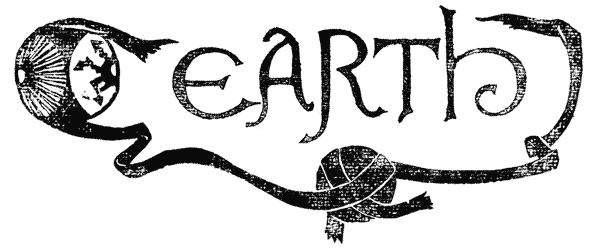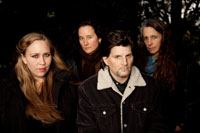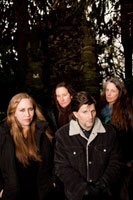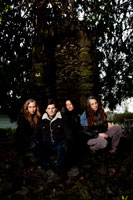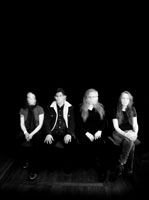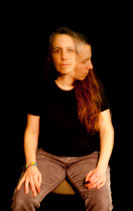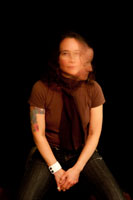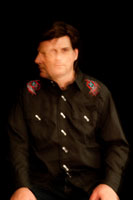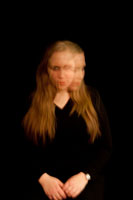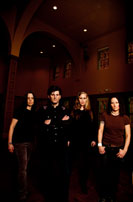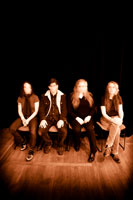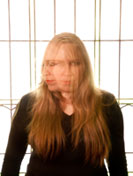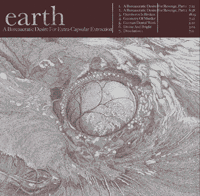click on image for high resolution copy
Band portraits: Sarah Barrick
Please Credit Sarah Barrick for Photographic Use.
![]()
![]()
![]()
![]()
![]()
angels of darkness, demons of light: i
![]() or its new album, Angels Of Darkness, Demons of Light: I,
Earth returned to Avast studios to work again with producer Stuart Hallerman, producer of many iconic Northwest recordings, including the seminal Earth 2.
or its new album, Angels Of Darkness, Demons of Light: I,
Earth returned to Avast studios to work again with producer Stuart Hallerman, producer of many iconic Northwest recordings, including the seminal Earth 2.
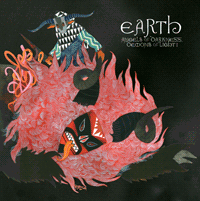 Heavy, lush and melodic, it draws inspiration from folk-rock bands like the
Pentangle and Fairport Convention, and the North African Tuareg band
Tinariwen. It is deeply textured, interlaced with fluid, nuanced improvisation.
Angels acknowledges Earth’s jazz-infused Americana of 2008’s The Bees Made
Honey In The Lion's Skull as well as their singular, epic, glacial heaviness.
Heavy, lush and melodic, it draws inspiration from folk-rock bands like the
Pentangle and Fairport Convention, and the North African Tuareg band
Tinariwen. It is deeply textured, interlaced with fluid, nuanced improvisation.
Angels acknowledges Earth’s jazz-infused Americana of 2008’s The Bees Made
Honey In The Lion's Skull as well as their singular, epic, glacial heaviness.
download one-sheet PDF
Artwork: Stacey Rozich
![]()
![]()
![]()
![]()
![]()
a bureaucratic desire for extra-capsular extraction
Artwork: Simon Fowler
download one-sheet PDF
view the one-sheet on Southern Lord site
![]()
![]()
![]()
![]()
![]()
interview with dylan carlson, excerpt
by Lori Goldston
November 29, 2010
PDF of the interview
read the complete interview
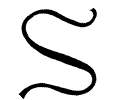 o you had these european records in your head when you made Extracapsular Extraction. Those early Earth records are so different from each other, and the songs are different from each other. They came out on Sub Pop and seem so odd in that universe, but then if you think about them in terms of weird European experimental rock records they make way more sense.
o you had these european records in your head when you made Extracapsular Extraction. Those early Earth records are so different from each other, and the songs are different from each other. They came out on Sub Pop and seem so odd in that universe, but then if you think about them in terms of weird European experimental rock records they make way more sense.
DC: That album, to me, is divided: there’s the experimental rock stuff, and there’s a metal riff, it’s just slowed down. “Orobouris is Broken”, if you speed it up it’s practically a Slayer riff.
LG: Absolutely!
DC: The two poles I swung between.
LG: But already with that record, the textures are so extreme and expressive; they seem so unusual for that time. More records do that now — the timbre is so dense and emotional. The timbre has a lot of emotional content! Where did that come from?
DC: I don’t know. Maybe because of that time in your life, you’re more volatile or something. No matter what you’re doing, how conceptualized it is, that comes out.
LG: You have more of that dramatic, adolescent energy.
DC: And especially as rock musicians, you’re allowed to be adolescent for the rest of your life!
To me the magic about music and instruments is that somehow this interface between this human being and this technological device, that the human stlll comes out. Theoretically it’s just a finger and a string and a vibration, so why can you tell “That’s this guy” and “That’s that guy”?
LG: It’s very mysterious.
So you’ve had this band for a long time, and you’ve been interested in and listening to all these different things. Some stylistic shifts are connected to what you’re thinking about and listening to, but a lot has stayed the same.
DC: I always preferred the slower tempos and longer songs. When I get into something, whatever I’m into at the time just consumes me for however long I’m into it.
LG: Once you start playing a song you’re just really into it, for a while?
DC: Obsessive, but with a long arc. Whatever I get into, I get into that, to the exclusion of everything else. But when I come out of it it’s like, how do I integrate it into what I was doing? It probably doesn’t – it’s probably all in my head that it connects.
LG: You mean within a song or within an album?
DC: Song, or interest, or album.
LG: You could say the same thing within the lifespan of the band, too.
Fast forwarding to the new album: was there something that ties together those songs for you? Was there something you’d been thinking about or listening to?
DC: I with think both the songs, which are more constructed, and the improvised stuff, to me anyway they reflect Fairport Convention, or the Pentangle, or Tinariwen.
Pentangle especially, because they took British folk but brought in elements of jazz and blues and integrated it, so it just sounds like Pentangle. If you want to you can go through it and go “Okay, there’s the jazzy part,” but it doesn’t sound like that.
LG: It doesn’t sound contrived.
DC: Yeah. But I definitely think there’s the Earth thing going on.
LG: What’s stayed the same and what’s changed [since Earth started in 1989]? It feels very additive, it shifts around, or the percentages shift around, the texture maybe moves slightly one way or another, but it’s still easy hear the droney La Monte Young, Terry Riley, Can stuff in what’s happening now.
DC: Some people are like “Oh, you guys have changed so much.” I go back and I listen, and – maybe just because it’s me; everything sounds continuous. None of the changes have been that dramatic to me. But people act like “Every album is completely different!”
LG: It all sounds like Earth.
DC: The way I look at is there’s a thing I do with the slow tempos and long songs. To me each record is going back in influence. At first it was prog rock and heavy metal, then more “classic” rock, then blues and country and now folk music.
Because I view music as this continuum; no one “invented” anything! For one thing I think it misses the point entirely. Who cares who invented it? Again, it’s that authenticity thing: who was the authentic first? That’s not how things are, how anything is. It’s all a continuum of development. It’s music. It’s just music.
As long as humans were conscious, I think there’s been music. That’s my personal take. It just developed this way here and that way there. People don’t sit in one spot, people move around and mix and share ideas and technologies and fuck on another and have kids. This whole idea of purity and authenticity is bizarre. It’s some weird construct.
I feel like I’m going back, and integrating earlier versions of this continuum into what I do, becoming aware of earlier things. I hope I’m getting better at playing; the idea is that I’m getting better at what I do, integrating earlier and earlier sources. That’s the difference, not a radical departure. The three main things have been the same: length, drones and tempos.
The new music is less chordy. Before we had all these chords, there were guitar chords and piano chords, guitar solos and piano solos. It was very dense. Now the guitar’s melodic, the cello’s melodic and then there’s a rhythm section, so it’s more…
LG: It has more forward motion and less of a blocky, vertical construction.
DC: Yeah, to me we’re less Wagnerian and more Debussy-like now.
PDF of the interview
read the complete interview
